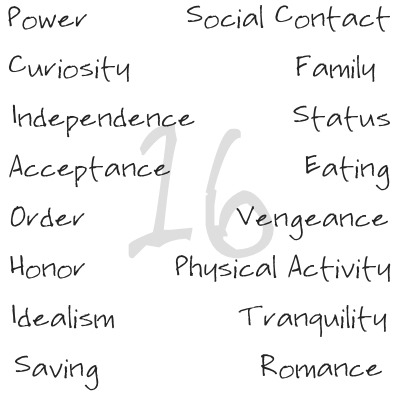
by Sandy | Apr 14, 2018 | Best Practices, MBTI Facts
In this post best-selling author Seth Godin talks about the futility of trying to convince someone to think the way you do. He could have been describing the experience of expecting others with different MBTI types to see things as you see them.
What I thought was interesting was his suggestion that people do business with people who are like-minded. Of course he was talking about people who had behaviours and interests that were similar.
Maybe there is something to what he suggests. I’m not really sure what I think about this idea but I recently had an experience that might prove him right. I facilitated a day of visioning with two business owners- one had ESTJ preferences and one was ENTP. One two occasions the person who is ENTP explained an idea that I was trying to get across by making it more tangible. Maybe it isn’t a coincidence that many people who seek me out as a coach have NF, NT or SP temperament preferences. My approach is often a mis-match for SJ’s no matter how conscious I try to be about my language and pace.
While I mull this over, I am curious to hear your thoughts on the benefits of finding “like- minded” customers/clients rather than trying to adapt or getting them to see things your way?

by Sandy | Apr 7, 2018 | Best Practices, MBTI Facts
Money is tight and time is tighter.
What that means for training is cutting back on both quantity and unfortunately that often impacts the quality as well. Consultants are often willing to dance to the tune of the sponsor. “If you lower the bar and need the limbo we can do that because we want to pay the bills and because we may think that something is better than nothing”. The consultant or type practitioner sees that the client is in need of assistance. Those of us who use type tools know the benefits of understanding type, so we agree to “do what we can” within the framework that is given.
In a TypeLabs webinar Hile Rutledge of Otto Kroeger and Associates provided a bit of a wake-up call around this issue. That was not his intent but what he suggested was that a type practitioner needs to be very clear about knowing the purpose of any type training. In doing MBTI training he suggests that type practitioners need to contract to have the first training designed specifically around helping participants understand MBTI type theory well enough to make an informed decision about their “best-fit” type. That’s it – a single focus.
Then, applying type awareness to improving communication, decision making or conflict resolution for an intact team would be contracted for a second session.In the end trying to crunch introduction and application into a shorter and shorter single session timeframe doesn’t serve the client well.
The bottom line is that the type practitioner or consultant needs to be very clear about the implications of lowering the bar to limbo standards and they need to make sure that the sponsor understands exactly what outcome they can hope to achieve for each level of investment.
It is better to elevate the discussion to focus on results rather than budget alone. Anyone wanting to use type in their organization is well advised to budget for the time required to build a strong foundation and to introduce a mechanism for reinforcement in applying the knowledge.
The waltz has a 1 – 2 – 3 count and type practitioners need to take the time to present the case for quality instead of agreeing to shortcuts in a knee-jerk fashion. I understand that what I am suggesting flies in the face of current economic reality however it is important to stop and reflect on what’s required to provide a good outcome.
Without the investment of time in training and integrating into the common language of the team, the MBTI is filed at the bottom of the cabinet under MY WHAT? “Oh that was something we did last year if only I could remember what it said”

by Sandy | Mar 12, 2018 | Other Personality Assessments
A Mastermind group that I belong to had the injection of 3 members taking the group to 10. WOW the energy in the room was amplified tenfold and I really had the sense that the new members had shifted the dynamic 100% in a brief hour.
Personality was one aspect of this impact. I could imagine that at least 2 of the 3 members had a preference for Extraversion and Thinking. Since we use Insights as our assessment tool of choice these new members brought a significant injection of Red energy. Insights is a psychometric tool based on the psychology of Carl Jung and is familiar territory to those who know the MBTI and temperament models.
Believe me when I say I was awake for the whole meeting. The pace increased and I had the sense that people were processing quickly and would not tolerate being bored. That certainly caught my attention and it was an exciting element to think of how the conversation was going to be interesting and challenging.
There would be absolutely no going back to a more bucolic pace. We were in for a different kind of meeting.
What’s comfortable and familiar is seductive for many. Even change junkies have places in their lives where they fall back into the familiar. How to you handle change in a group? Are you ready to rewrite “how things are done around here”. to accommodate the needs of the new additions?

by Sandy | Mar 12, 2018 | Reiss Motivation Profile
Do you know what your needs are?
I’ll be you haven’t really consciously thought about this question recently. Of course Maslow has put them into a hierarchy for us, starting with the basics of food, shelter and ending with self-actualizing needs. But I will wager that other than our daily cave man like morning mantra “need coffee now” or monthly whine “really ought to hit the gym” most of us don’t pay attention to our needs.
What happens when a particular need goes unmet?
Ahhhh…hhhaaaa Unmet needs make themselves known. If you don’t notice your discomfort, your cranky mood, then perhaps someone close will be kind enough to point it out to you. They may ask “What’s wrong?” “You don’t seem to be yourself?” It may be as subtle as a lacklustre feeling seeping into everything, or something feeling “off”.
How can you really know what your needs are?
Here’s a scenario that you might know well. You think that you need a bigger, better car, house, job, city etc. and then you will be happy. You might recognize this syndrome in others when you listen to them complain.
Some of us might actually be able to become the kind of excellent observers of our behaviour that allows us to suss out our true needs which most likely aren’t the kind that are satisfied by a new house. For the rest of us looking at the Reiss Desire Profile can be enlightening. This assessment is a comprehensive, standardized, objectively validated instrument that assesses 16 basic psychological needs. Fourteen of these needs or desires are based on animal behaviour; for example, power, independence and curiosity can all be found when studying the animal world.
Who is responsible for my needs?
The simple (yet not so simple) answer is… you are. Here’s an example of the not so simple answer. One of the most challenging needs, if it applies to you, is the need for Acceptance. Before you think that we all have that particular need, the truth is …. we don’t. Some people honestly could care less what you think about them. Not in a mean way – it simply isn’t on their radar screen.
If you have a need like this and expect that because you give it to a particular person or even a job that there is an automatic quid pro quo return due to you, you may be sadly mistaken. In addition it is not necessary. You need to be responsible for getting your need met but if you realize that you can get it met in many ways you can design a solution that works. In the case of Acceptance, there are organizations that value this need – overtly acknowledging this by giving awards and having recognition dinners. Volunteering or working with individuals or organizations that help meet this need takes the pressure off expecting to find it in all the wrong places. Dog owners often boast that they receive unconditional love and acceptance from their pet. Suggesting that a pet can make a difference may seem at first like a trite response – I’m not certain that it is.
So what?
Pay attention to your moods, your feeling of well being. Our emotions and our bodies are great sources of information for us if we pay attention.
If you aren’t sure what needs aren’t being met or what needs are being stepped on or what you are ignoring, look at a needs based tool such as the Reiss Desire Profile.
Take action into your own hands and make a plan to get your needs met. This is not a one time affair. Meeting your needs once does not make them go away. They drive your behaviour whether you are paying attention or not.

by Sandy | Mar 7, 2018 | Reiss Motivation Profile
People that like to think over-complicate things because it gives them more to think about.
This isn’t a direct quote but it comes close to the words Dr. Steve Reiss, Professor of Psychology, used during his recent presentation in Chicago on his research on motivation. He turns previous models of motivation on their head. Reiss claims that motivation is a lot clearer and more direct than theorists have proposed. He further claims that emotions are not what motivates behaviour. Reiss has researched and scientifically validated 16 motives that are universal and encompass all aspects of needs, wants, values and desires.
In an article in “Psychology Today” Reiss explains:
I consider motives as goals, and motivation as the assertion of values. I pay some attention to emotions as indicators of whether or not motives are satisfied, but I don’t view emotions as motivational.
In the case of people who like to think, the motive has been labelled by Reiss as “intellectual curiosity”. He goes on to add that “the goal of curiosity is understanding; the emotion is wonder; and the value are ideas.”
Motivation Applied
One distinction of Reiss’s work on motivation is that he has married his findings to various applications such as sports motivation, school, advertising and relationships. In a school setting, a person who is motivated by curiosity will seek multiple ways to find understanding. They will feel at home amongst books such as a library environment, they will buy and read books, they will explore ideas through research or on the internet. Satisfying their curiosity in one area will only spark more curiosity and more desire to understand. This motivation does not apply to every student. Someone who is motivated by Power may learn to receive awards.
Reiss tells us that the emotion of wonder does not play a role in predicting the behaviour of a person motivated by curiosity but that we need to look at the value they have for ideas and how they assert that value will give us an idea of their behaviour. Put them in an environment where things are done by rote and opportunities to explore ideas and think are restricted and the emotions associated with boredom, frustration and anger will indicate that the value is being thwarted. They may also not care about receiving recognition in the form of awards or money for learning.
Many people talk about emotion as an end goal…”I just want to be happy.” What gives one person happiness will not match another person’s motivational profile. When considering the role of emotion, observe that the emotion is an indicator of whether a person’s is fulfilling their desires or values or not. This will tell you what you need to know to motivate them. Don’t complicate it -it is that simple.





